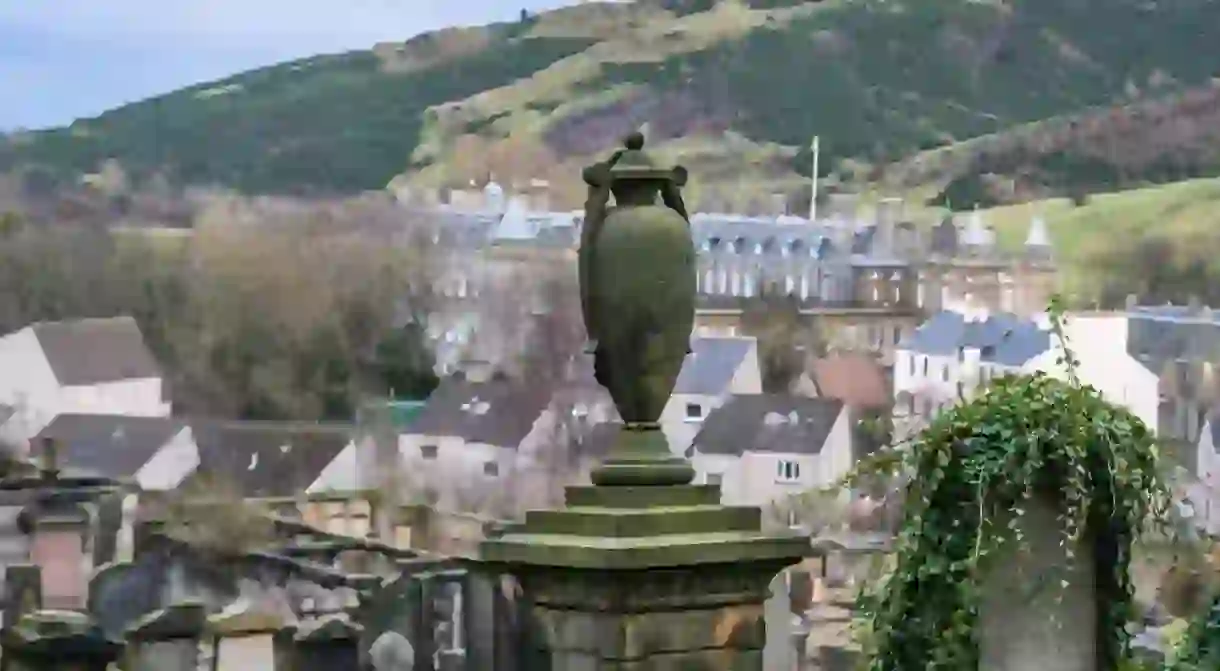The Most Historic Cemeteries To Explore In Edinburgh

Entangled with history and drenched in intrigue, Edinburgh has quite a reputation. Although a little unusual, there’s no better way to grasp a city’s history than to tour its churchyards and cemeteries. From the resting spot of renowned philosopher David Hume to the Soldiers’ Dog Cemetery, here are the most historic cemeteries to explore in Edinburgh.
Greyfriars Kirkyard
Cemetery

Perhaps the most famous cemetery in Edinburgh, Greyfriars Kirkyard dates back to the late 16th century. Amongst those laid to rest here are poet John Gray and his beloved canine Bobby, who slept on his grave for 13 years. Linked with a bloody past, around 1200 militant Covenanters were held captive in a field near the cemetery during the late 1600s. By the 18th century, this area acquired vaulted tombs or the Covenanters’ Prison. The Kirkyard is also home to the Italianate tomb of Scottish lawyer Sir George MacKenzie, a man known as Bluidy MacKenzie. The tomb, which was broken into in 2004 via a ventilation slot (a skull was stolen and used as a football), is supposedly haunted with MacKenzie’s poltergeist. Today, you can still see the iron railings implemented to deter grave robbers and the sturdy stonewalls. Mortsafes or iron cages were also used to protect bodies from being exhumed to sell for medical research.
Old Calton Burial Ground

A mandatory pilgrimage for philosophers and thinkers alike, Old Calton Burial Ground hosts an array of some of the most prolific intellects of all time — most notably, the philosopher, historian, and key pioneer of the Scottish Enlightenment, David Hume. Due to members of the public feeling outraged at his atheist views, Hume’s body was guarded for eight consecutive days following his burial. Robert Adam created his tomb, a vast cylindrical tower, in 1777. Others laid to rest here include scientist John Playfair, clergyman Dr Robert Candlish, publishers William Blackwood and Archibald Constable and painter David Allan. Upon exploring, it’s hard not to lock eyes with the intricate carvings (skulls, scythes, ribbons and anchors) adorning Captain John Gray’s grave. Other highlights include the American Civil War Memorial and the Political Martyrs’ Monument.
Edinburgh Castle Dog Cemetery
Historical Landmark, Architectural Landmark

It doesn’t take a rocket scientist to see that man’s best friend and the good folk of Edinburgh have a particularly special bond — look at the story of Greyfriars Bobby. Not forgetting the unbreakable bond shared by humans and canines, there is an special section within the confines of Edinburgh Castle for dogs to rest in peace. Perfectly manicured grass and wee tombstones set the scene for this doggy cemetery, which dates back to 1840. This soldiers’ dog graveyard was created for regimental officers to give their companions the burial they deserve.
New Calton Graveyard
Cemetery

When matters became too crowded at the Old Calton Burial Ground, the only solution was to build an overspill area. The New Calton Burial Ground, situated on the southeast part of Calton Hill, is steeper than steep and sports stellar views to Holyrood Palace and Arthur’s Seat. Once established, between 1817 and 1820, it was quite the ordeal to transfer and rebury the bodies of those who rested in the older graveyard. Noticeably, there are certain stones dating back to before the cemetery was established, which are indicators of the disrupted sites. To prevent the inevitable grave robbing, a watchtower was erected close to the entrance. History states that, at one point in time, a family of ten occupied this tiny tower as a home. Also, family members of writer Robert Louis Stevenson are buried in this peaceful spot.
Canongate Kirk
Church

Before becoming an official part of Edinburgh, the Canongate was its own independent burgh. Built between the years 1688 and 1691, The Kirk of the Canongate is a congregation of the Church of Scotland. Edinburgh Castle, the Palace Of Holyrood House and the Scottish Parliament are all included within the parish. An active church to this day, Her Majesty The Queen’s granddaughter Zara Phillips was married here in 2011. A fine bunch of immensely talented individuals, the likes of economist Adam Smith, philosopher Dugald Stewart, poet Robert Fergusson, and Robert Burns’ famous mistress ‘Clarinda’ all claim this as their eternal resting place.
St Cuthbert's
Church

The Parish Church Of St Cuthbert, located to the west end of Princes Street and the western foot of the Castle Rock, is steeped in history, dating back many years. In fact, a mention of a chapel in honour of St Cuthbert in the exact same spot as today occurred back in the 8th century. Encapsulating the church like a mysterious green ocean (and a somewhat unusual extension of the Princes St Gardens) is the churchyard. The original, smaller burial area was referred to as the ‘Bairns’ Knowe’ or ‘Childrens’ Hill’, as it was reserved primarily for the burial of children. 1841 saw the churchyard uprooted when a train tunnel was constructed for Waverley Station. In 1863, the churchyard was temporarily closed for being ‘too full’. The three-bay Gothic mausoleum of the Gordons of Cluny is worth investigating, as it sticks out amidst the many stunning and breathtaking monuments.
Looking to see more than just the cemeteries of Edinburgh? Check out this list of tours to get the best out of your time in Edinburgh!













